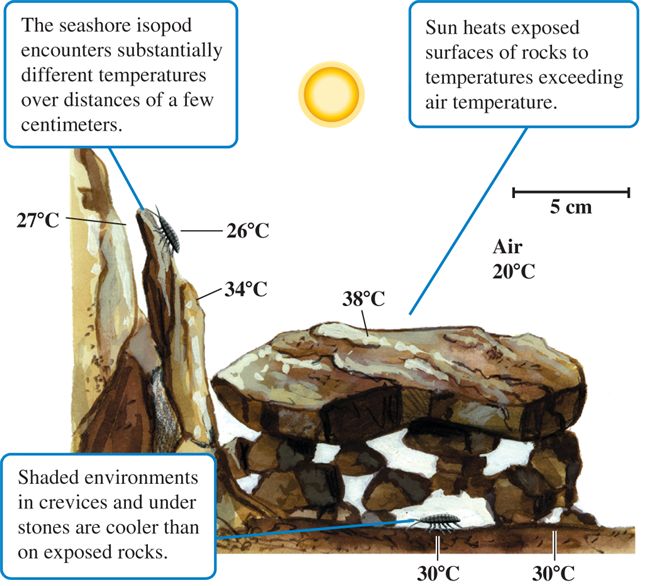 |
| Previous Image | Next Image |
| Description: Many children soon discover that the undersides of stones harbour a host of organisms seldom seen in the open. This is partly because the stones create distinctive microclimates. E. B. Edney's classic studies (1953) of the seashore isopod Ligia oceanica documented the effect of stones on microclimate. Edney found that over the space of a few centimeters, Ligia could choose air temperatures ranging from 20°C in the open to 30°C in the air spaces under stones, which heated to between 34°C and 38°C. This small-scale variation in temperature is summarized in figure 5.6. Animal burrows also have their own microclimates, in which temperatures are usually more moderate than outside ambient conditions. For example, the Eurasian badger, Meles meles, constructs extensive burrows, called setts. In a study of temperatures inside and outside of several setts on farmland, Moore and Roper (2003) found that setts generally had average temperature fluctuations of less than 1°C each day, while surface temperatures generally varied by 9°C daily. Over an entire year, there was only a 10°C variation within setts, while more than 20°C variation outside. Moore and Roper also found that setts occupied by a badger were on average 2.5°C warmer than unoccupied setts, highlighting the fact that organisms themselves can alter their own microclimates.
Picture Stats: Views: 1231 Filesize: 70.53kB Height: 586 Width: 670 Source: https://biology-forums.com/index.php?action=gallery;sa=view;id=1632 |
